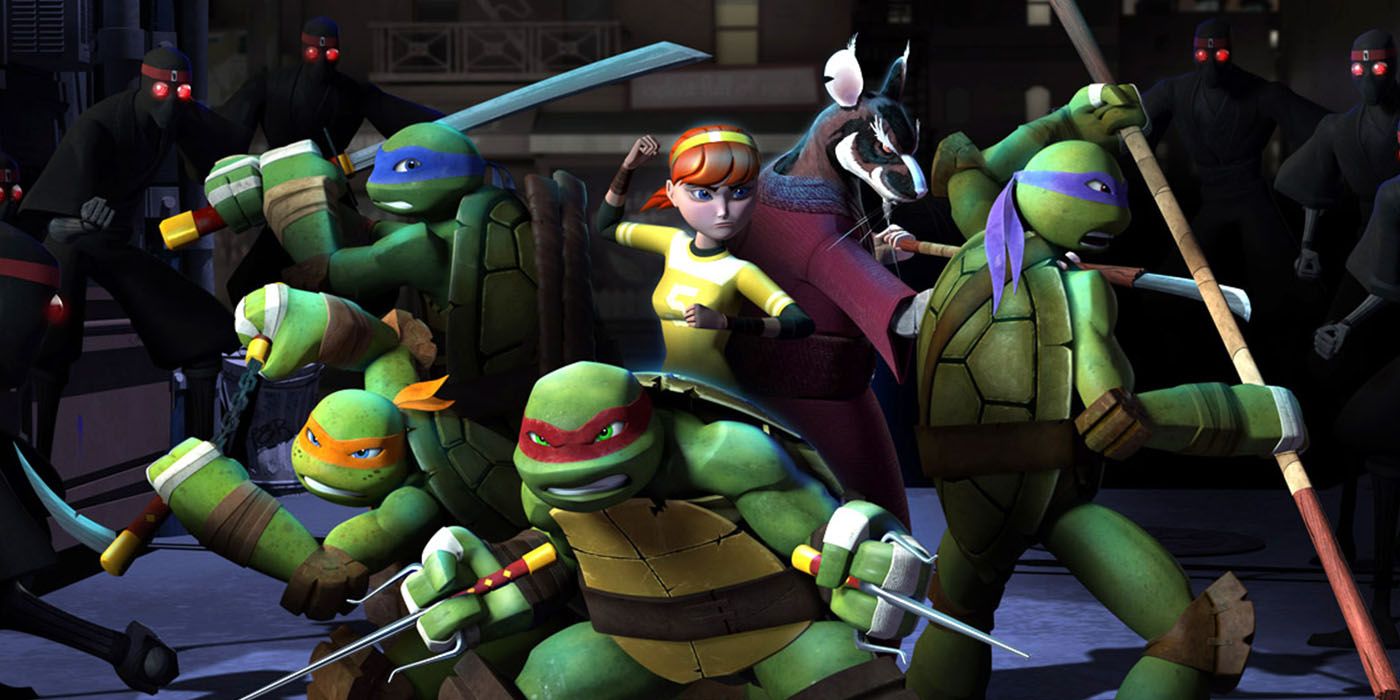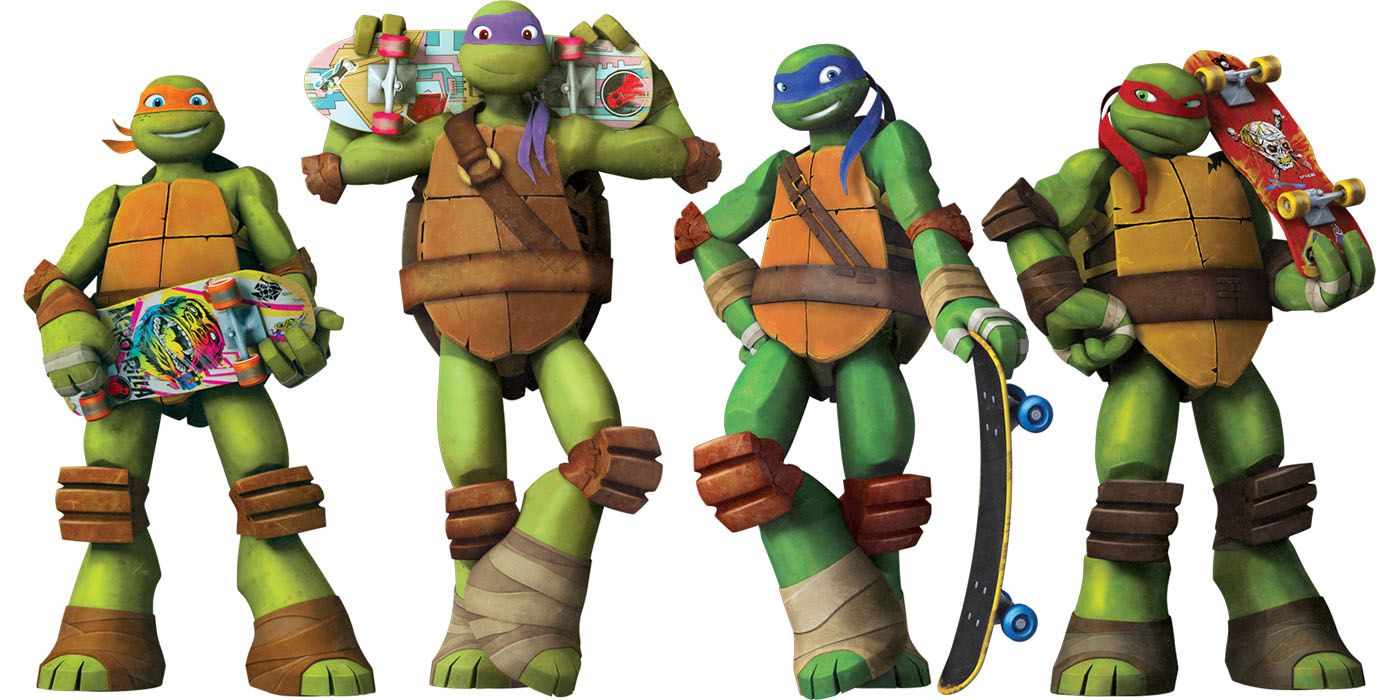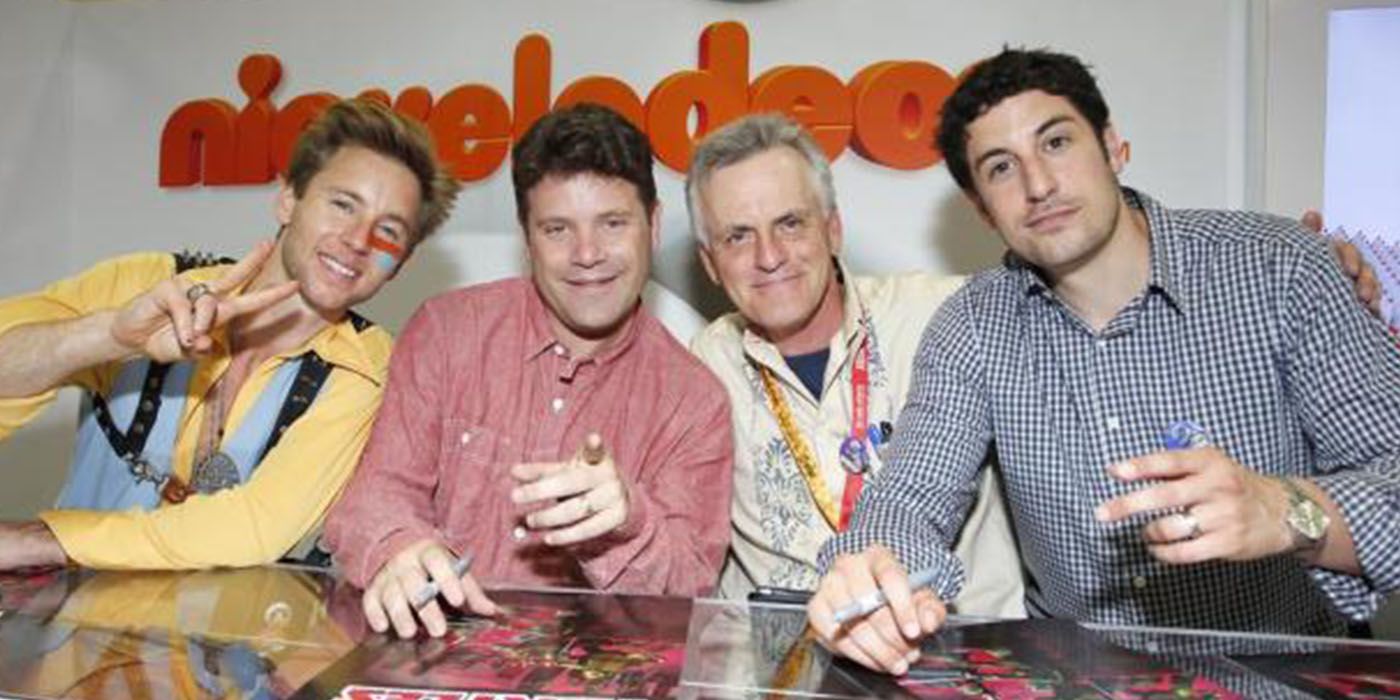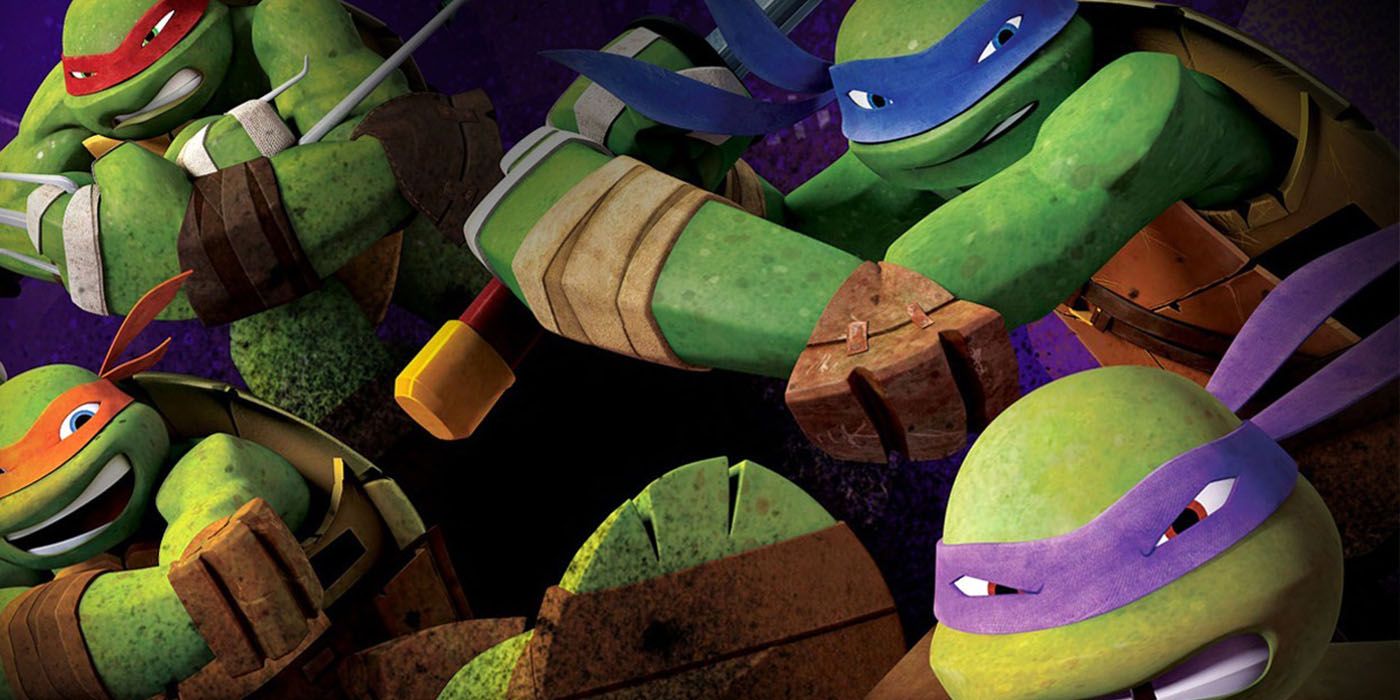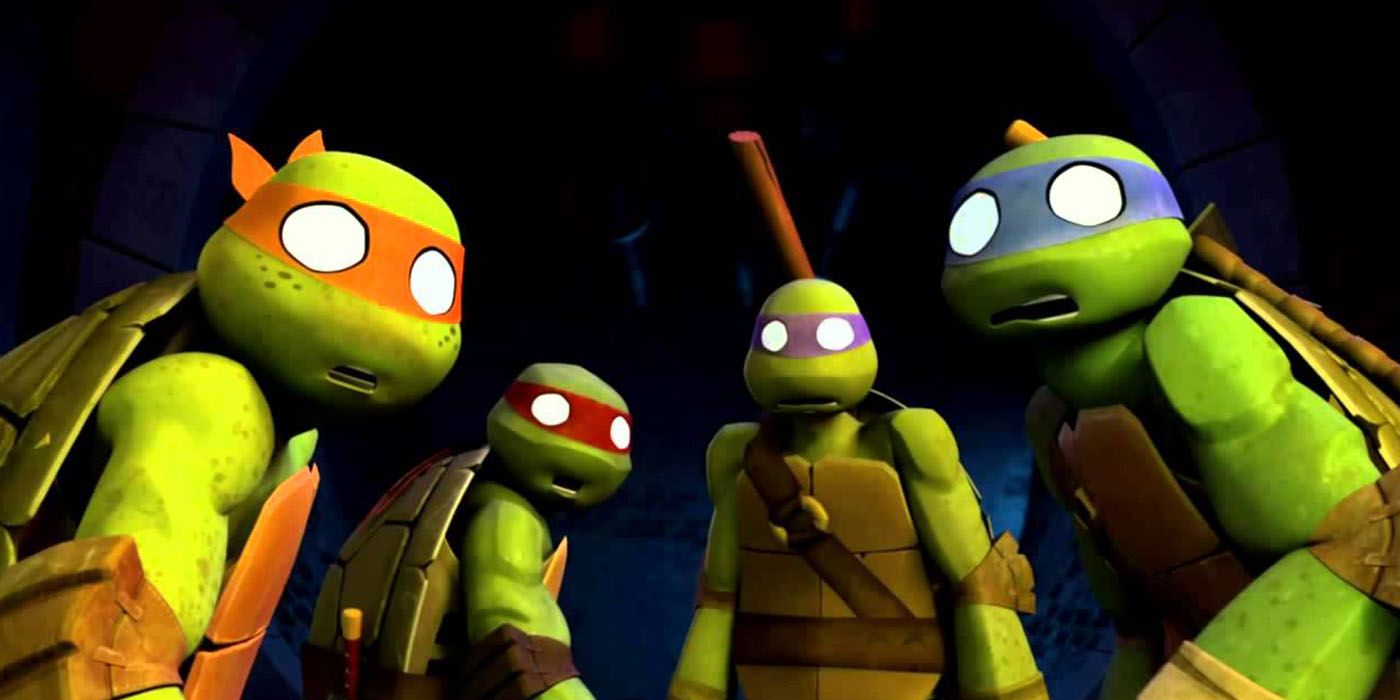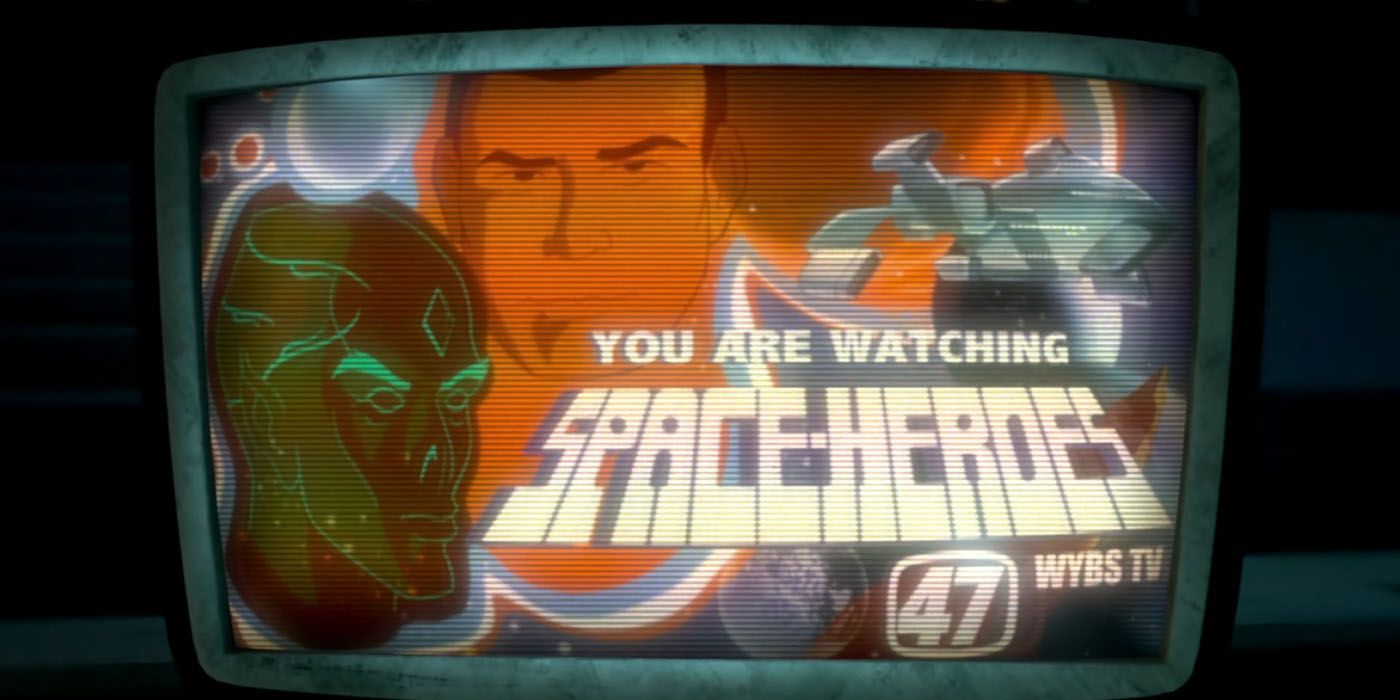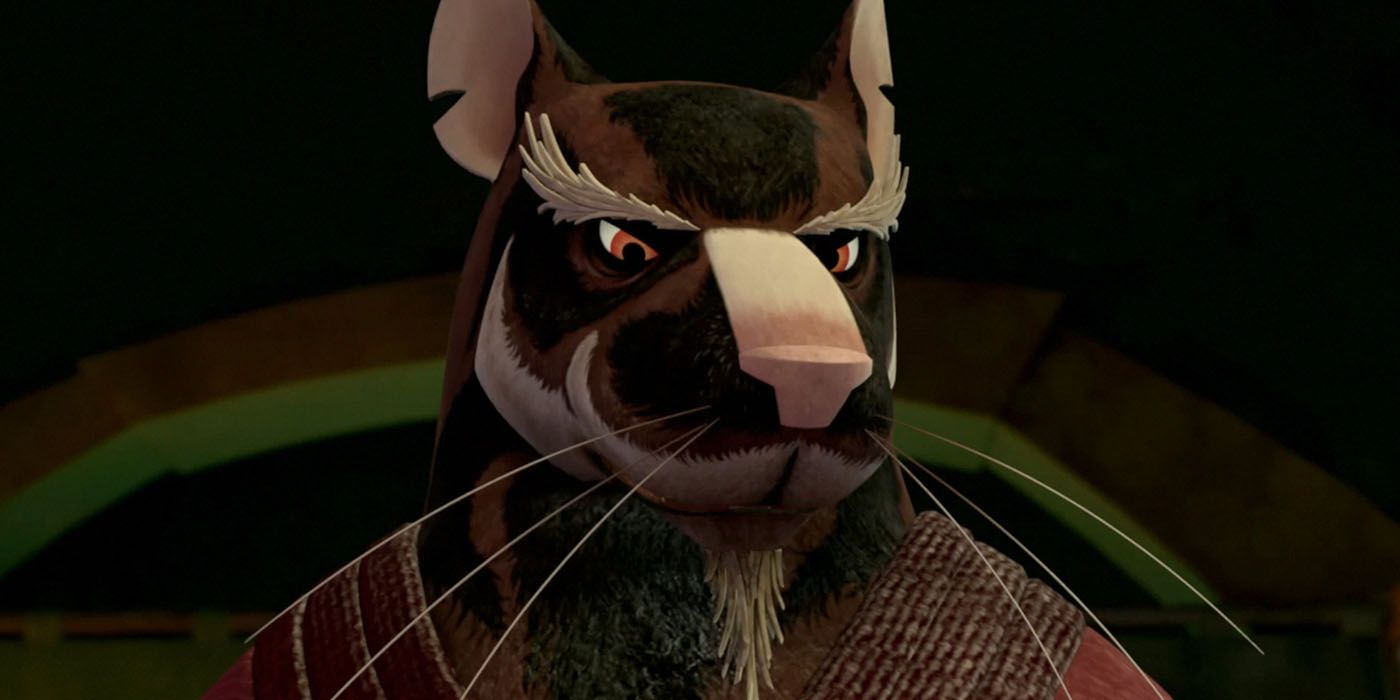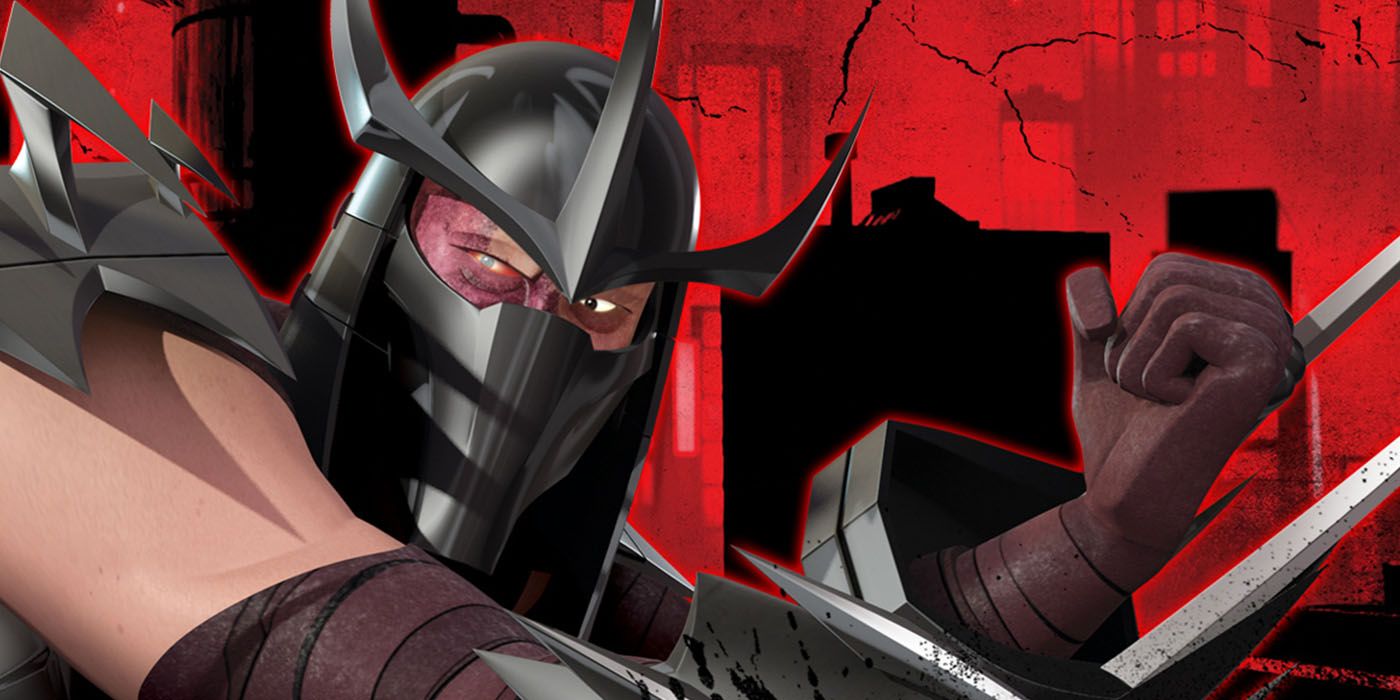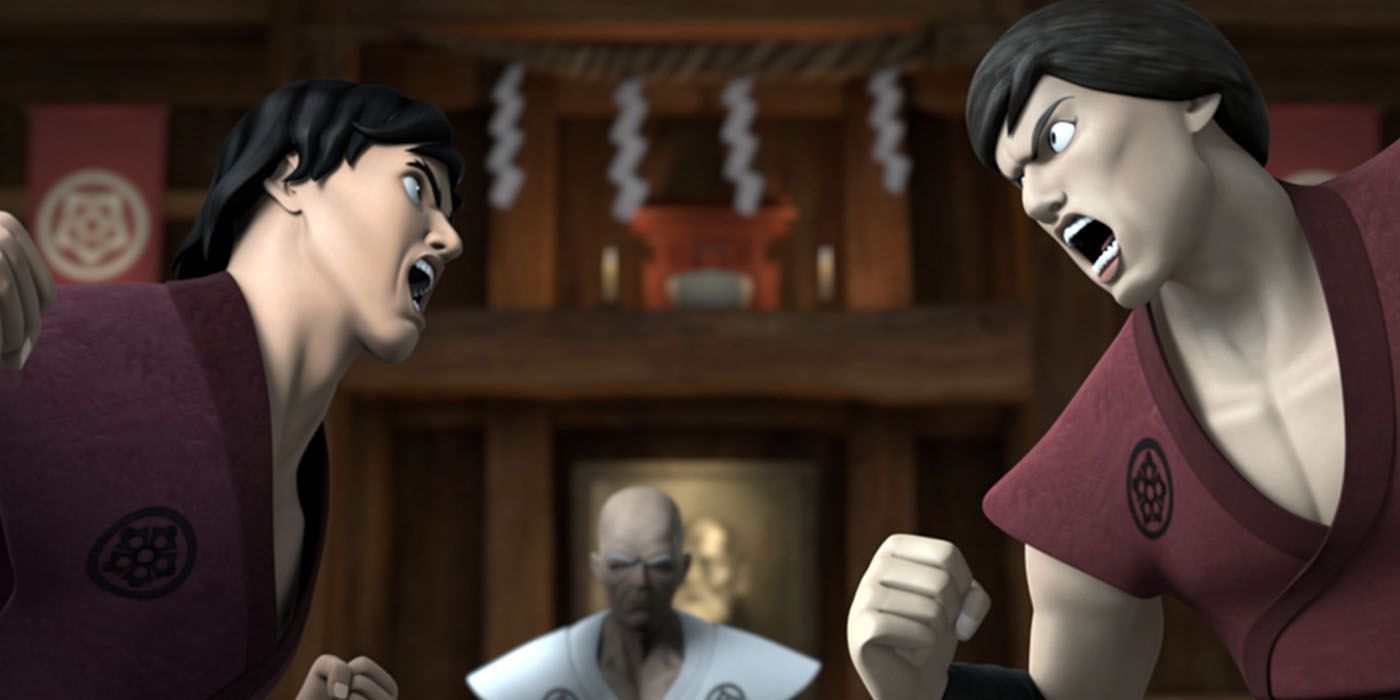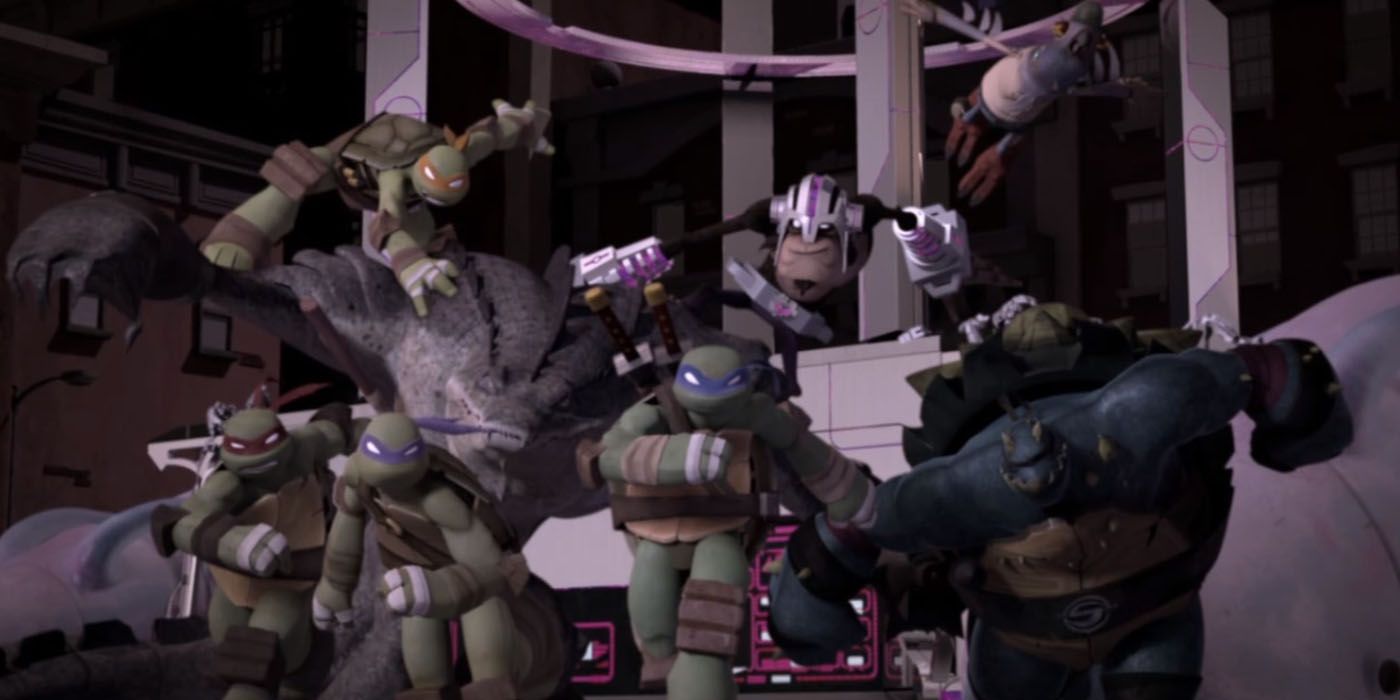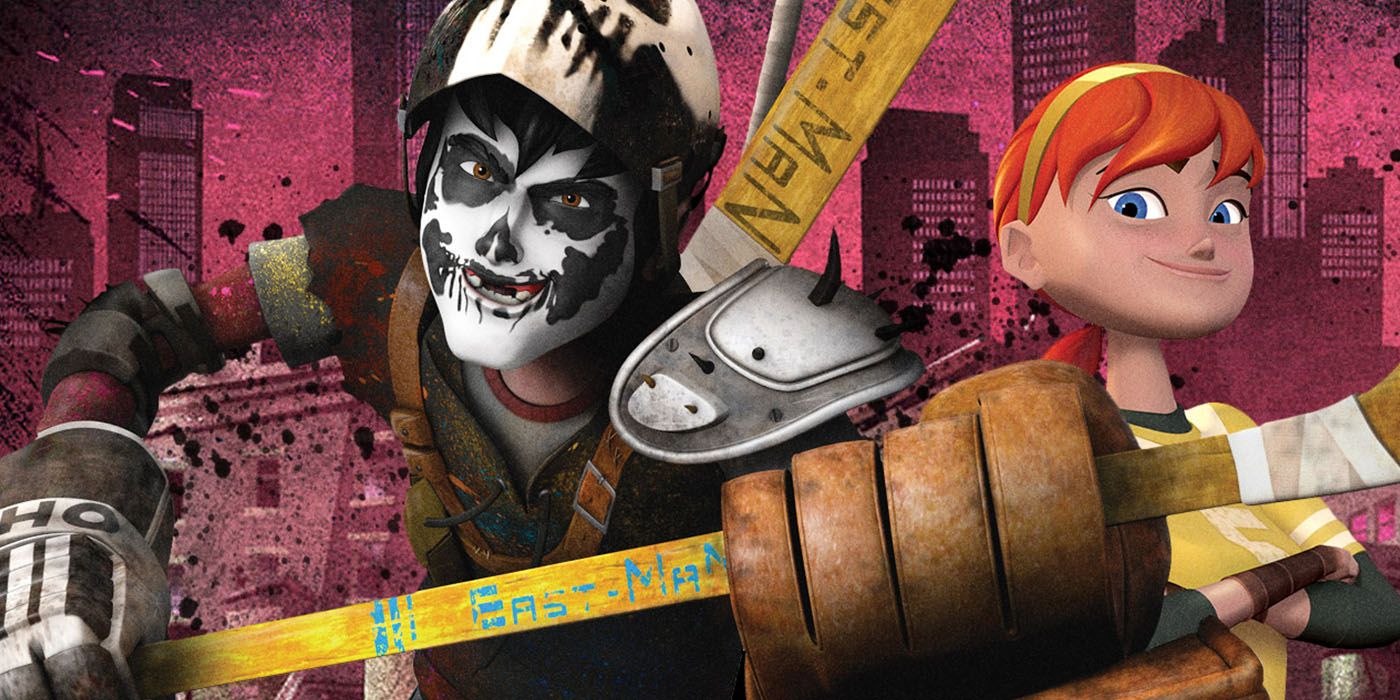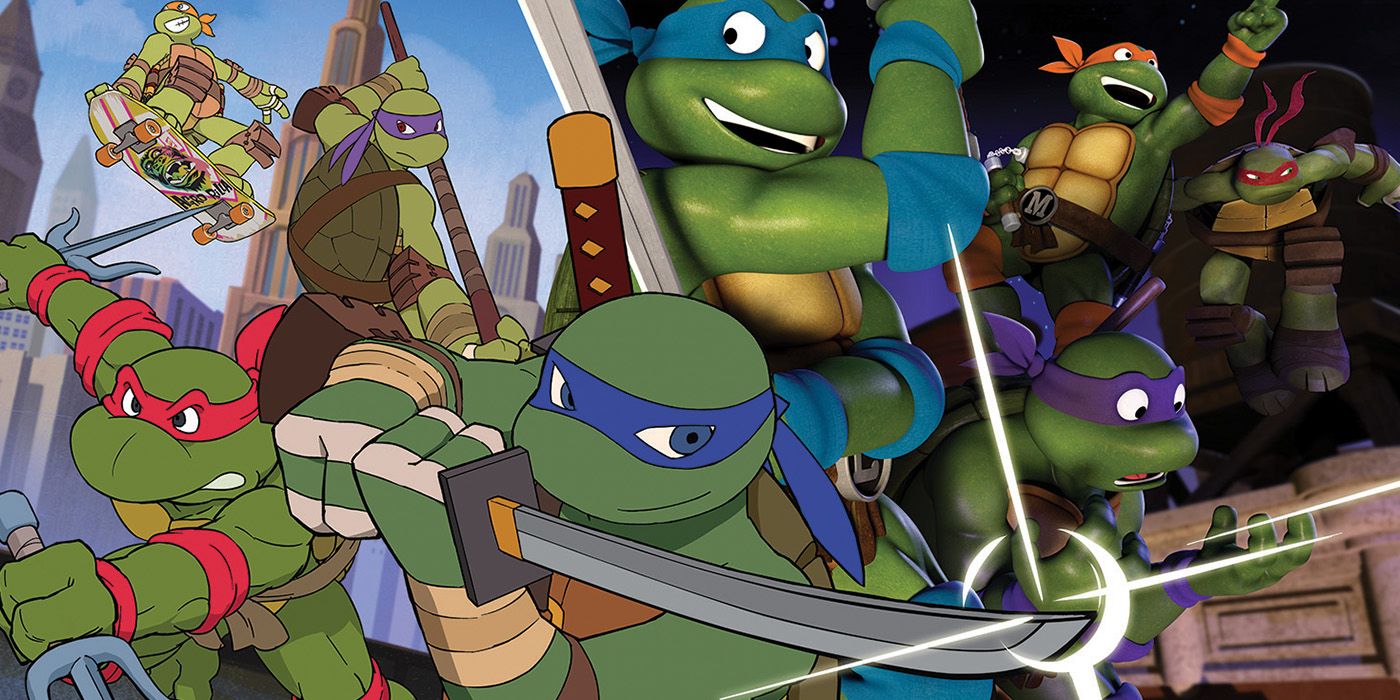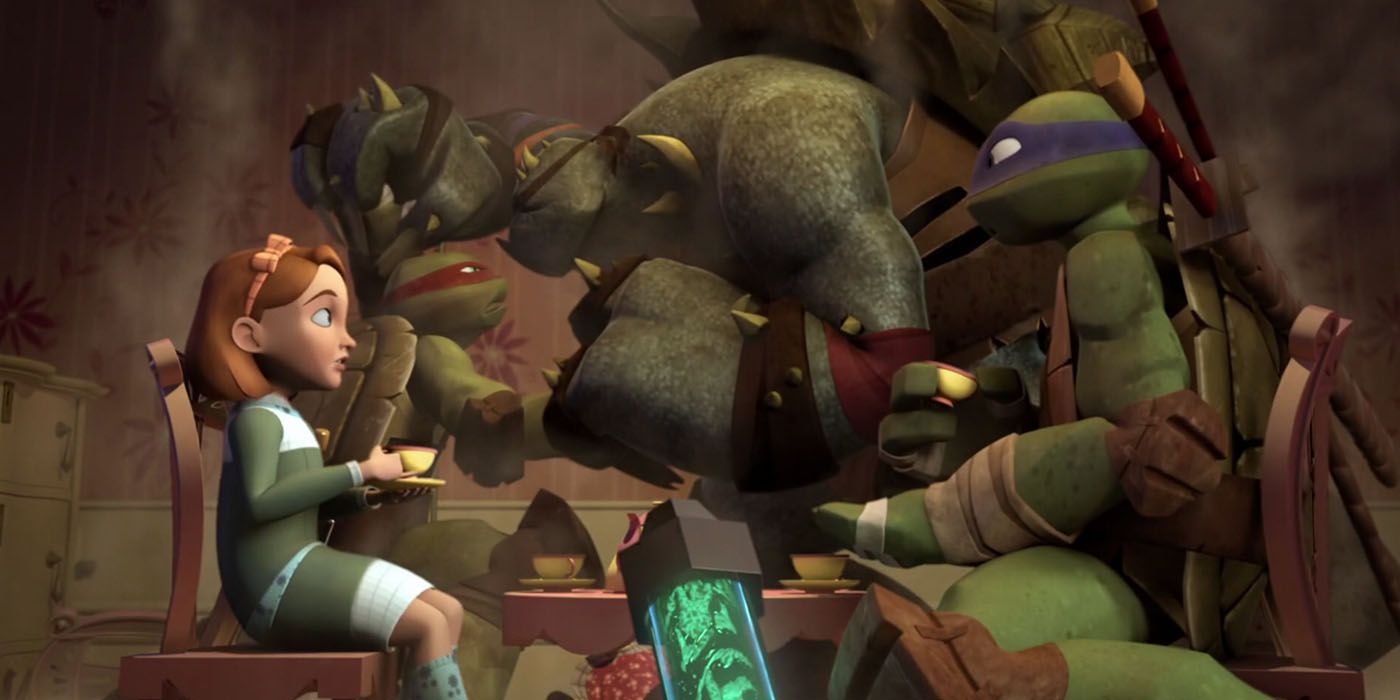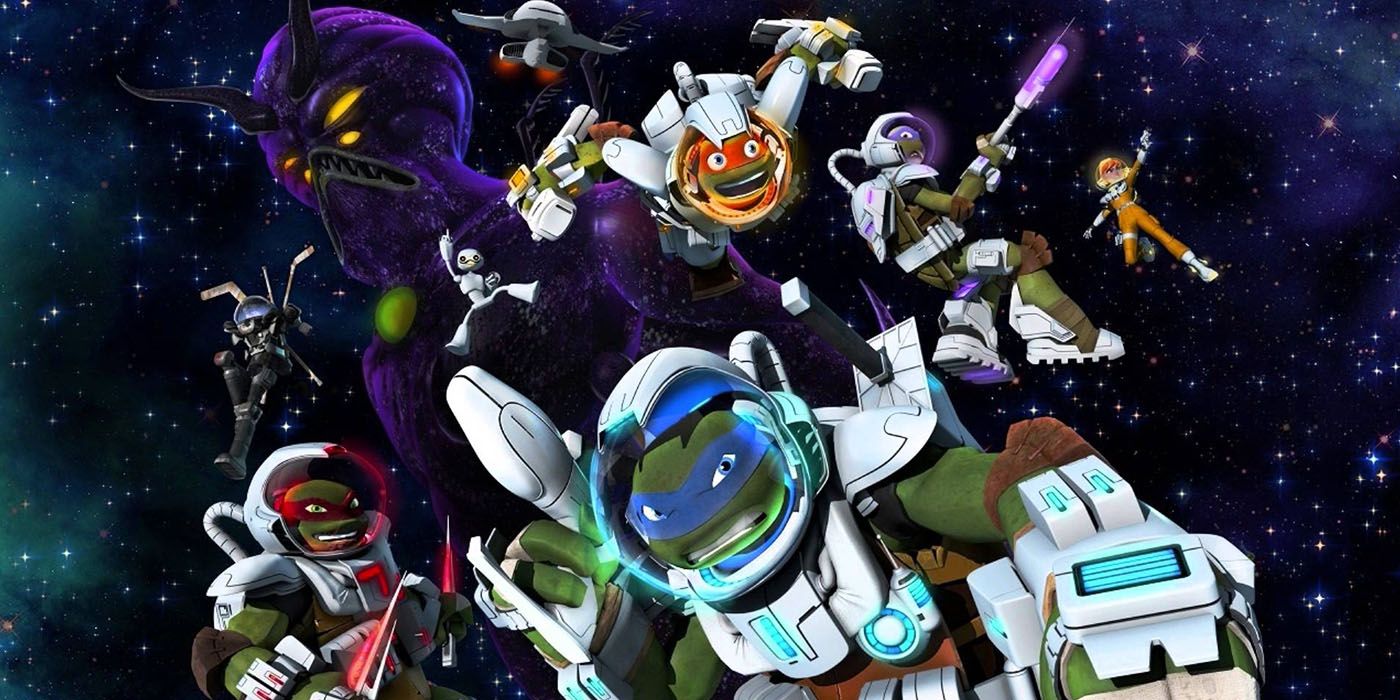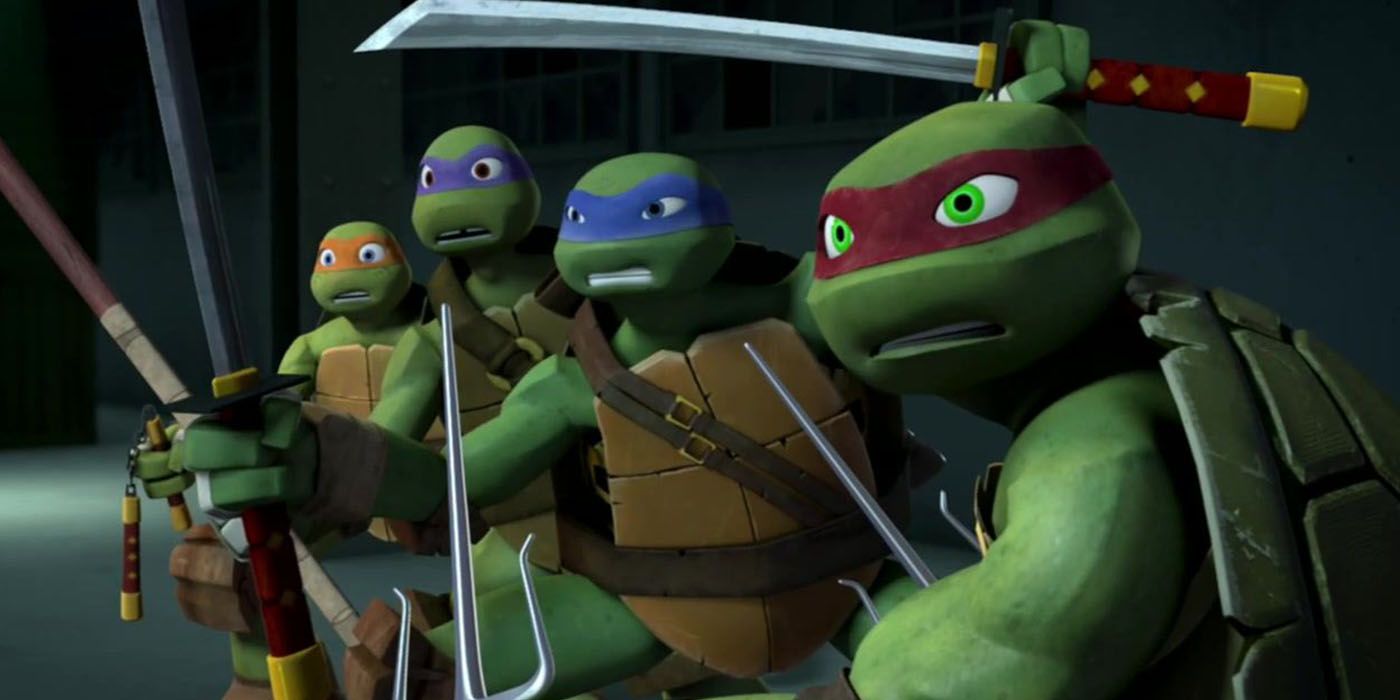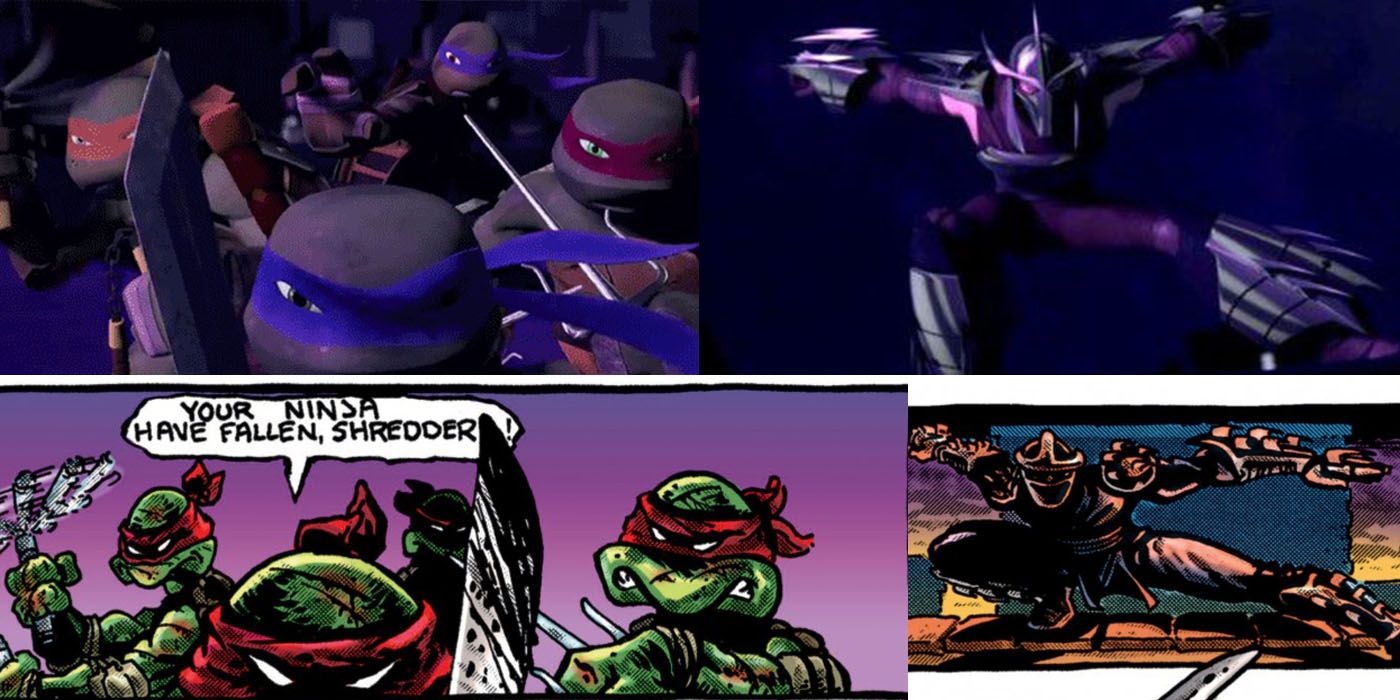As 2012's "Teenage Mutant Ninja Turtles" begins its final season, it feels right to look back at the series — its success, its creativity and its interpretation of the classic characters. The series first premiered in September of 2012 and was the first 3D rendered TMNT series to be produced.
RELATED: Shell Shockers: The 15 Deadliest TMNT Villains
Lots of TMNT fans regard the original series as one of the best, if not the best Turtles show, but we might just be able to change their minds. The TMNT of 2012 was produced by and broadcasted on Nickelodeon and found ways to include nearly every character in some way and nods to many classic stories form all interpretations while still being wholly original. With that, here are CBR's 16 reasons why the 2012 TMNT is the best ever.
16 THE DESIGNS
In the original comics, the Turtles were pretty much identical, all of them wore red masks so their only defining traits were their weapons. In the first animated series, the Turtles still looked identical, but had different colored masks and their initials on their belts to help differentiate them. In the 2003 series, the turtles got a sort of buffer upgrade, but still had little differentiation between them besides their colors. The 2012 series decided to mix it all up.
The Turtles have different builds, masks, head-shapes, and paddings that help give them each their own personality. The side characters have great designs as well; Splinter, Shredder, April, and Casey Jones all look more unique than ever. The Turtles' sensei rocks his classic kimono, but his rat form has a mix of colors that have never been used before. April and Casey actually look like teenagers and Shredder is, in a word, badass.
15 THE VOICE ACTORS
One of the series' biggest strengths is the talented voice cast, both of the turtles and the other supporting characters. Leonardo was voiced by Jason Biggs for the first half of the show, with Seth Green taking over later. Both actors played a humble, but determined leader. Raphael is voiced by "Lord of the Rings" actor Sean Astin, who brings all the anger and attitude that the hot-headed turtle needs. Veteran voice actor and voice of "Teen Titans'" Beast Boy portrays wildcard Michelangelo as though he was born for the role. Lastly, Rob Paulsen, another veteran voice actor and voice of Raphael in the original series makes a return to the Turtles as Donatello, his goofy performance fitting perfectly to the smart and awkward inventor.
Other voices in the series include Hoon Lee as Splinter, Mae Whitman as April O'Neil, Kevin Michael Richardson as Shredder, Kelly Hu as Karai, and Josh Peck as Casey Jones. The voice cast is as diverse as it is talented, with the likes of J.B. Smoove and Clancy Brown voicing two of the many mutants featured in the series.
14 EXPANDS THE TURTLES' PERSONALITIES
Somewhat in tandem with the fact that the original series' Turtles had similar appearances, their personalities were somewhat one-dimensional. Don't get us wrong, the personality types that they established help to develop the characters beyond the stern and serious team of the original comics, but looking back, they were pretty simple. The 2003 series did a bit more to expand on the team, but the Turtles' personalities are much more defined in the 2012 series.
The Turtles follow the classic team of four setup; the leader, the hothead, the smart one and the wildcard. The 2012 series uses these basic setups and gives each team member his own time in the light to showcase their deeper personalities. Over the course of the series, we came to find that though Donatello is book-smart, he is not wise. We discovered that rough and rowdy Raphael is a hothead because he's passionate. Michelangelo is more than wacky comic relief, something we see in his ability to remain unpredictable in battle. Lastly, Leonardo, though a determined and spiritual leader, is not without his insecurities in his abilities, and also not without his mistakes.
13 THE HUMOR
Not many people know that the original "TMNT" comic was both a tribute to and a parody of the popular comics of the '80s: "Daredevil," "Ronin," "Cerberus" and "New Mutants." Essentially, they took pieces of these comics — teenagers, mutants, ninjas and anthropomorphic animals — and combined them into one strange idea. Using money from a tax refund, Kevin Eastman and Peter Laird self-published the comic and gave the satire a dark and gritty tone to contrast the ridiculous premise.
The 1987 series took the comics in a bit of a different direction, making the Turtles more kid-friendly and adding that classic '80s cartoon charm into the mix. The series was, in retrospect, mainly a comedy with some action bits thrown in (until the least three seasons where it became more serious). The 2012 series found just the right mix of humor and action, using anime iconography for the characters' reactions and making nods to the ridiculousness of the classic series. That being said, the 2012 series isn't without its own ridiculousness, but those elements don't overtake the show. The episodes are more story-driven, finding the right points for comedy.
12 THE CARTOONS
Speaking of humor, some of the best ongoing bits the show uses have to do with the cartoons the Turtles watch each season. Each of these cartoons is a parody of a famous TV show, and are all incredibly cheesy and terrible. Yet, the Turtles cant get enough of these shows and they are in every season.
In the first season, they watched "Space Heroes," a parody of "Star Trek" that featured terrible B-movie-styled acting and drew the attention of Leonardo. The second season featured "Super Robo Mecha Force Five," a satirical tribute to shows like "Voltron" and "Battle of the Planets." Donatello connected with the nerdy character of this show who pined after the beautiful girl — much like how he pines after April. The third season's cartoon was a "He-Man" parody entitled "Crognard the Barbarian" which was hokey and made very little sense, which is probably why Mikey loved it so much. Season four featured "Chris Bradford's 2 Ruff Krew," a cartoon based on the martial-artist-turned-mutant Chris Bradford and parodied the short-lived "Chuck Norris: Karate Kammandos." The latest season has introduced a much darker sequel to "Space Heroes" entitled "Space Heroes: The Next Generation."
11 SPLINTER
The origin of Splinter has gone back and forth between two main interpretations. In some, he is the mutated pet rat of Hamato Yoshi, and in others, he is Hamato Yoshi. The 1987 and 2012 series used the latter origin of the Turtles' sensei, depicting him as formerly human. The 2012 series, however, expanded on this origin and took elements of other interpretations.
In this version, Splinter was once a member of the Hamato clan along with his adoptive brother, Oroku Saki. Saki and Hamato were friendly rivals both in martial arts and in love, specifically the affection of Tang Shen. Tang eventually married Hamato, causing their rivalry to get much more violent. After Saki accidentally killed Tang Shen, Hamato fled to New York, where, after purchasing four baby turtles, he was hit by the mutagen that led to Splinter and the Ninja Turtles that we all know and love. This version of Splinter not only has a great origin story, he is also wise, eccentric, and incredibly skilled at fighting. The 2012 Splinter is a force to be reckoned with, in both mind and body, making him one of the most badass parts of the series.
10 THE SHREDDER
Speaking of Hamato and Saki, the 2012 series' interpretation of Shredder is a straight-up badass. Not only is he voiced by the intimidating-sounding but incredibly friendly Kevin Michael Richardson (you've heard his voice literally everywhere), but the way his character is depicted — his rise and fall, the humanity that peaks out of the monstrosity, his obsession with the turtles — is absolutely brilliant.
As a warrior, Shredder is fierce and hard to match, even by the Turtles and Splinter. As a leader, he is clearly intimidating, commanding respect from his underlings by fear alone. As a father to Karai, he is conflicted, showing humanity in how he cares for her, but also wishes to use her for his war against Splinter. Design-wise, Shredder wears bulky samurai-like armor — sporting his signature helmet, which is known as the Kuro Kabuto, the helmet of the head of the foot. There's a lot to like about this version of Shredder, not only because he was mutated into the Super Shredder in season four, but also because like most of the aspects of the 2012 series, he takes elements from all previous versions to make something unique and fresh.
9 JAPANESE CULTURE
Since "ninjas" is in their name, it's a safe assumption that Japanese culture would play a big part in the stories of the Teenage Mutant Ninja Turtles. The original comic had a lot of Japanese culture within its pages, thanks to the influence of "Daredevil" and Frank Miller's "Ronin." Though the 1987 and 2003 series had a small share of episodes focused on Splinter and Shredder and their past, the use of Japanese culture was limited for the most part. The live action films, both the original and the reboots, also eased up a bit on the Japanese influence.
In the 2012 series, the use of Japanese culture is prominent in nearly every episode (save for the season where they went to space, but more on that later). It seeps into everything: the Turtles fighting style, their rooftop-jumping movements, the foot clan, and especially in Splinter and Shredder. The adoptive brothers from Japan bring old teachings, folklore, aesthetic, stories and martial arts from their home country. Furthermore, characters like Karai, Shingami, Splinter and Tigerclaw are portrayed by asian voice actors, the latter two actually speaking Japanese in scenes.
8 THE MUTANTS
Everyone remembers Bebop and Rocksteady, two lovable, if not a bit incompetent mutants under Shredder's command. They weren't the only mutants that fought against and sometimes alongside the Turtles, many others like Rahzar and Tokka found themselves mutated after touching different animals and getting hit by mutagen.
This is where the 2012 series pays tribute best to the original series. A lot of classic mutant characters make appearances with newly redesigned forms. Even the stranger ones like Mondo Gecko and Slash eventually become members of the Mighty Mutanimals. The greatest part about the character redesigns is the fact that they're, well, gross. The mutants range from slightly gross but cool — like Bebop and Rocksteady – to straight up hideous like Rahzar and Baxter Stockman when he becomes a fly-mutant. The reason why being gross works so well is that it makes the mutants feel like actual mutants; like something in their DNA has been mixed up in a way it shouldn't be. Regardless of their appearance, each redesigned mutant's backstory is streamlined in a way that makes them much more solid characters than other interpretations.
7 THE KRAANG
Speaking of gross things, let's talk about everyone's favorite day-old-bubblegum-looking villain, Kraang. Everyone remembers the android-controlling alien as one of the Turtles' most powerful foes, and the 2012 series amped him up to insane levels. They took bits of the lore from each of the Turtles incarnations, expanding them to a full species of hive-mind-esque aliens known simply as The Kraang.
The Kraang were once a relatively peaceful species known as the Utrom. They were taken over by a scientist known as Kraang, who used mutagen to make himself larger and to give himself psychic abilities. He used his power to take hold of most of his species and named them after himself. In this incarnation, the Kraang are responsible for the mutagen that created the Turtles and all other mutants in the series. They serve as antagonists for the first few seasons both as their own threat and as allies of the Foot Clan.
6 THE SIDE CHARACTERS
April O'Neil, Casey Jones, and Karai are long-standing staples of Teenage Mutant Ninja Turtles, with versions featured in every iteration of the franchise. All three originated in the comics — though Karai would come later — and have gone through many different interpretations.
Not many people know that April was originally a scientist, not a teenage reporter. In the 2012 series, she is depicted as a normal high schooler who eventually undergoes ninja training with Splinter, and even develops psychic powers. Casey Jones, instead of being a gruff and buff vigilante, is reimagined as an overconfident teenager, who thinks he's indestructible enough to become a crime-fighter. He's lanky and egotistical and exactly what an actual teenaged hockey player would be like as a vigilante. The last of the supporting teens is of course Karai, who is depicted as Hamato Yoshi and Tang Shen's daughter, who was adopted, or rather kidnapped, by Shredder after Tang Shen's death. Shredder raised her as his own, teaching her the ways of the foot so that she could destroy her own father. Luckily, Kurai chose to side with the Turtles after learning of her true father.
5 THAT CROSSOVER
Though it wasn't the first to crossover with past interpretations of the Turtles — the 2003 series did it first with "Turtles Forever" — 2012's series brought back the original voice actors of the 1987 series for a clash between old and new Turtles. The setup is somewhat convoluted, as it starts with time travel, mixes in dimension-hopping, and ends with time-clones.
The basic premise is that the 2012 Turtles are transported to the 1987 world by their Kraang, who is related to the Kraang species of the 2012 world and was banished to the 1987 world for being incompetent. From there, it's the classic crossover setup where the Turtles of both worlds must work together in order to stop the teamed-up villains. It's a great crossover that showcases the 1987 Turtles in a 3D rendered style, and the 2012 Turtles in 2D. The Mirage Comics versions even manage to make a quick cameo. Together, the eight turtles save the day and the 1987 Turtles even leave Mikey with a new catchphrase, the classic "Cowabunga!"
4 THE WEIRDNESS
The 1987 crossover is just one of the many weird elements that the 2012 cartoon presents. Of course, the original cartoon is easily stranger than anything out there, since it was, ya know, the '80s, but the 2012 series isn't without it's strangeness. There are things like Kraang technology, the mutants, the LARPing, and even an ice cream kitten mutant living in the Turtles' fridge, all of which serve to keep the series strange, and incredibly fun.
Teenage Mutant Ninja Turtles as a concept is strange, plain and simple. Just look at that name, four things you thought you'd never see together somehow became a worldwide phenomenon. It really only makes sense that, beyond the original concept seen in the first comics, the Turtles' adventures might get a little strange. The original series got weird, and upon rewatching it, some fans might find that the weirdness was not very cohesive story-wise, and was usually a method to sell new toys. While the 2012 is still a means to sell playsets at times, the weirdness in it acts as both a tribute to the 1987 cartoon and the general nature of the characters, and as strong plot-devices and story pillars.
3 TURTLES IN SPACE
Speaking of weird, how about we talk about the amazing first half of season four where the Turtles travel through space with the Fugitoid? This of course only happens after the Triceratons manage to destroy Earth, forcing the Turtles to travel back in time six months in order to steal the earth-destroying device before it can be used. Still with us? Good, because these episodes are some of the show's most insane, and most fun.
During this season, the Turtles, along with Casey and April, go on crazy space-adventures, with lots of nods to classic space-travel story tropes and cliches. Throughout all of this, April hones her psychic powers, Raph gets a pet baby fire-breathing-space-turtle and falls in love with a salamander alien, the Turtles visit shady space markets and cafes, and the team manages to save Earth and Splinter, despite their plans going awry. It's a ridiculous and all-out-bonkers way to fill out the first half of a season, and it ends up being a lot of fun.
2 THE FIGHT SCENES
The series is not without its faults. Though the designs of the show are great, there are some aspects of the texturing and rendering of the 3D animation that leave something to be desired. Regardless, the series manages to more than make up for the less-than-stellar rendering by taking full advantage of a 3D environment and by using creative effects.
The fight scenes are perhaps the greatest example of the show's 3D camera work. There are very few fights that stay fixed on one or two views; the camera almost always moves with the action, following the Turtles 360 degrees as they slash and bash away at enemies. The movement of the Turtles is worth praise too, as they move like actual martial artists/parkour runners, using smooth movements and real ninjutsu attacks. The latter escape the dull texturing by blurring with each movement, things like Leo's blades or Mikey's nunchucks are rendered differently when moving, creating a 3D blurring effect thats hard to describe, but helps to make the action feel much more real.
1 THE SHREDDER FIGHT
One of the greatest fight scenes appears early on in the first season. The ninth episode of the show, entitled "The Gauntlet" features the first encounter between the then rookie Turtles and the deadly Shredder. This scene is great because it is taken right out of the comics and really shows just how much the Turtles have to learn, and their defeat really solidifies it.
In the original comic, when the Turtles encounter Shredder, the fight seems even at first, but the Turtles eventually take out Shredder, killing him. That's right, they defeat Shredder in the first issue. Other interpretations made him a more long-term villain and the 2012 cartoon has him defeat the Turtles in this rooftop encounter. Though the ending is different, much of the choreography and cinematography of the fight is the same, each attack feeling like it might be a killing blow, like everyone is fighting for their lives. This was yet another example of the 2012 series taking from the Turtles' past and giving it its own spin.
Do you agree that the 2012 TMNT series was the best? If not, which one was? Let us know in the comments!

